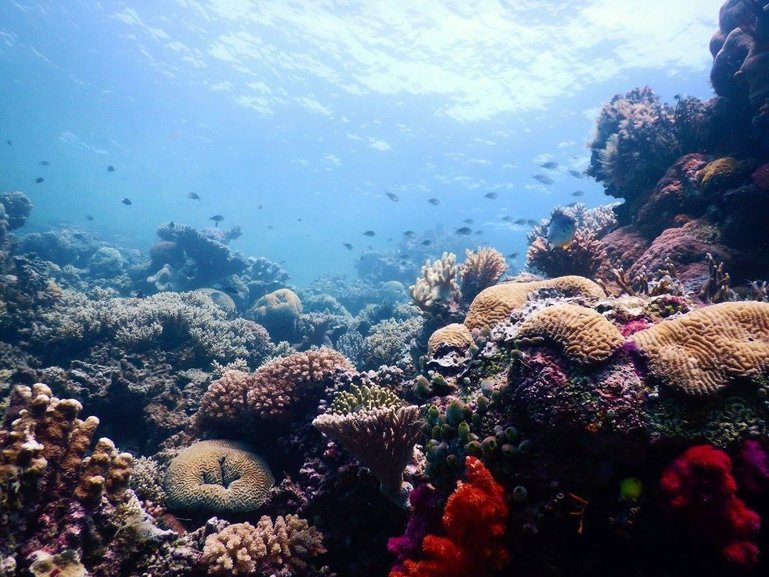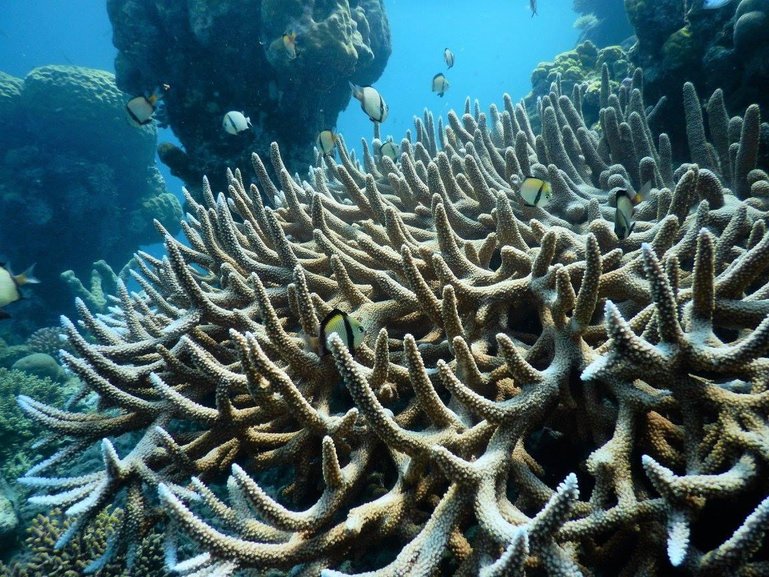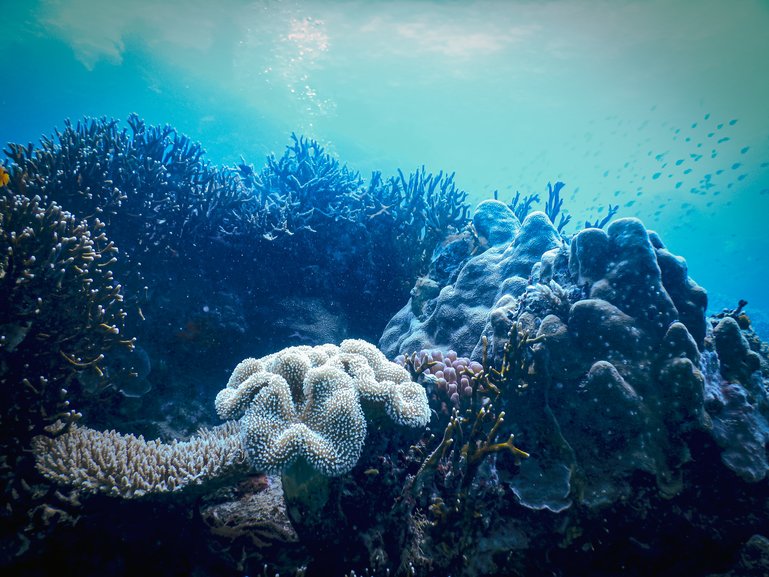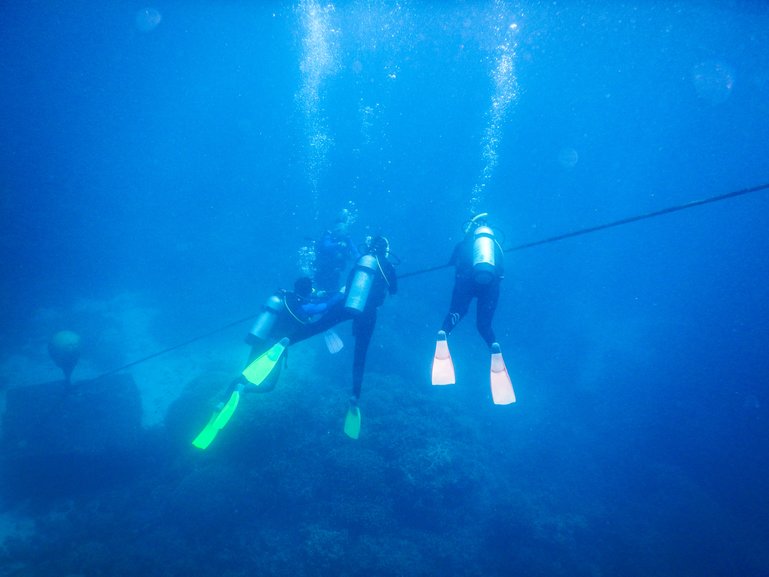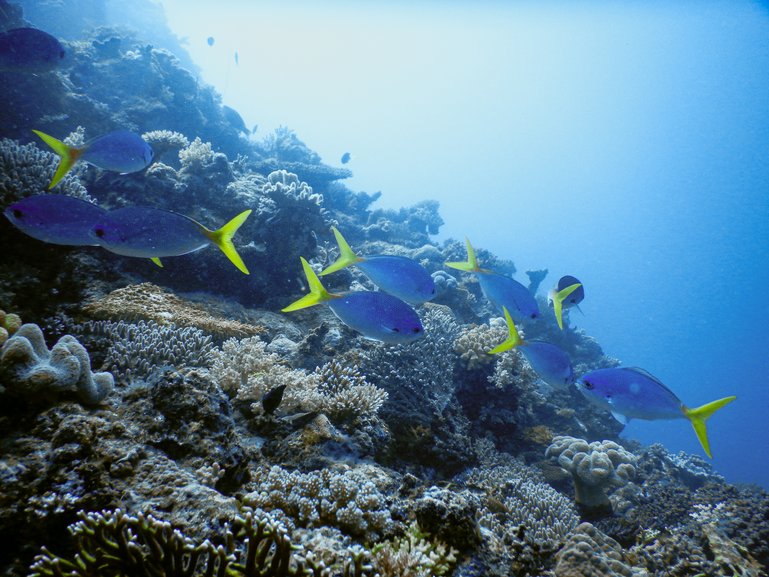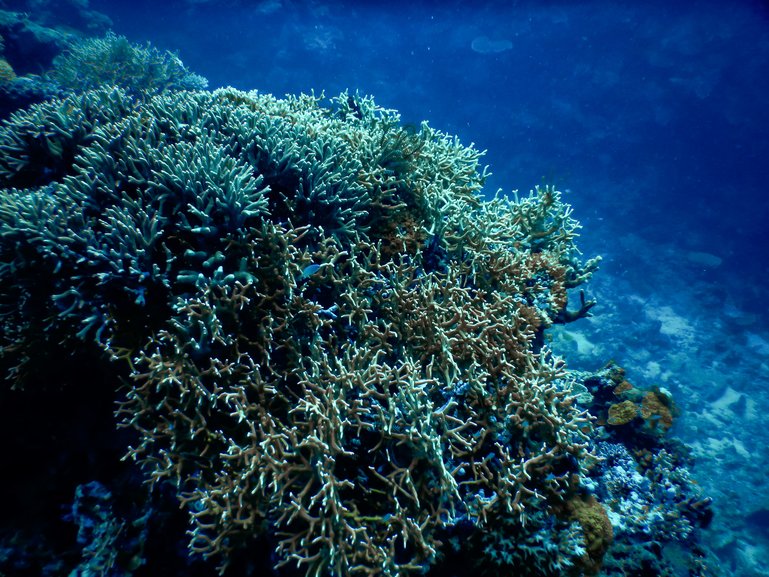The Great Barrier Reef is the world's largest living entity and covers approximately 348,000 square kilometres. To put that into perspective, it covers the entire area of the UK, or half of Texas. The reef system has been UNESCO World Heritage listed since 1981 and is the only natural structure that can be seen from space.
Time To Start The Day!
Waking up isn't so hard when you are heading out on your first open water dive at The Great Barrier Reef. Sure, I had been diving before (in a tank full of sharks no less), but I had been anticipating visiting the reef for years and the day had finally arrived. The Great Barrier Reef is the world's largest living entity and covers approximately 348,000 square kilometres. To put that into perspective, it covers the entire area of the UK, or half of Texas. The reef system has been UNESCO World Heritage listed since 1981 and is the only natural structure that can be seen from space.
I walked down to the Port Douglas Marina early. I had booked a tour with Quicksilver cruises, who are renowned for their 45m long catamaran that powers through the ocean at 72km (39 nautical miles). They market their catamaran, which is aptly named ‘Wavepiercer' as the smoothest ride possible in any weather, due to torpedo shaped hulls that pierce the waves.
Checking In
At the Marina, you'll find a Quicksilver reservations counter and check in is at 9:15 am, giving plenty of time for the arrival of coach transfers from both Port Douglas and Cairns and those who choose to self drive and park at the Marina (parking is free). I got my boarding pass from the counter and settled up the additional scuba dive I had previously added to my booking. I would recommend adding all extras prior to the day, as the spaces can become fully booked by the day of the tours, especially during peak season. Quicksilver tours head to the Outer Reef known as Agincourt Reef at the edge of Australia's continental shelf. Agincourt Reef is a ribbon reef that runs parallel to the continental shelf and adjacent to the coral sea trench, which allows for the most pristine ecosystems in the reef's environment. The tour price was $266 AUD, plus an additional $183 AUD for one intro dive. If you are already a certified diver, the cost per dive is lower. If you have the time and plan to dive anywhere else again, you can also do PADI dive certifications at the reef. I honestly couldn't think of a better dive site to get your certification if you are considering doing so.
I had some extra time before boarding, so I perused the shelves of the shopfront for anything I might need to add last minute to my trip supplies. I brought along my Nikon Coolpix W300 Digital Camera, Black, and all essentials, but found NIVEA SUN Protect & Moisturising 4 Hour Water Resistant Sunscreen Lotion. Made in Australia with Vitamin E & Panthenol, SPF50+ 1Lwhich I immediately added to my kit of essentials. Reef safe sunscreens don't contain chemical UV blockers, like oxybenzone and octinoxate, which we now know are a cause of coral bleaching. The Great Barrier Reef is already suffering from coral bleaching due to warmer ocean temperatures, ocean acidity and pollution, so having as low of an impact on the reef as possible should be everyone's priority.
Welcome Aboard
After check-in at around 9:30am, boarding starts. Complimentary tea or coffee is offered once the catamaran starts moving, which signals the start of the tour. I chose to sit inside the cabin so I wouldn't to miss any talks or briefings, but most passengers chose to be on the outside decks soaking in the full view of the ocean until they were required to head inside for the mandatory briefings if needed.
At 10:30am, the marine biologist on board started her informative presentation about the Reef and marine species, which is displayed on the vessel monitors and is optional to watch (but included in the tour fare). A snorkelling demonstration followed and those that had added dives or helmet walks to their tours were then given a 30 minute briefing with the dive crew in preparation of the upcoming dives/walks, covering a medical fitness check, underwater hand signals, basic dive skills, use of equipment and all safety aspects.
The Activities
At around 11:30am, the boat anchored at the floating activity platform, which is a 2 level platform out in the coral sea where all of the events of the day are run and co-ordinated from. All non-swimming guests can enjoy their day on the sundeck of the platform, in the undercover seating areas if you'd prefer to stay out of the sun or take a trip in a semi-submersible vessel, which goes 1m under water and is equipped with large viewing windows to view the reef whilst staying completely dry (included in the tour fare). The semi-sub trips leave the activity platform approximately every 15 minutes and take around 25 minutes to return back. You will be given commentary of what you are viewing out of the windows and you can go on as many semi-sub trips as you like in your day. There is also an underwater observatory on the activity platform for non-swimmers who are not keen on the semi-sub idea and fish feeding demonstrations (included in the tour fare).
All snorkeling, scuba diving, ocean walker tours and helicopter flights have their own areas on the activity platform. I headed to the introductory dive platform to start my booked scuba experience.
Introductory Scuba Diving
Introductory scuba dives are open to anyone over 12 years of age, with no experience necessary. At the scuba diving platform, we were paired with a partner. Diving and snorkeling always takes place in a ‘buddy system' so that no one is ever left alone in the open water. All equipment was then checked and adjusted as needed and we got all of the gear on ready to dive. All equipment is provided, including a stinger suit, buoyancy aids, masks (including prescription masks if needed) unless you want to wear your own and have them checked by a dive instructor before entering the water.
All introductory scuba dives are broken into groups of a maximum of 4 divers with one PADI qualified instructor. Quicksilver has multilingual dive instructors available on request and for those who are unsure or nervous about their first dive, you can choose to attend a scuba class before the day, usually in the safety of a swimming pool.
Upon entering the water, there are ropes for controlling your descent to the reef. The 4 divers and instructor will slowly make their way down the ropes and cover a few quick drills along the way to make sure everyone is comfortable before starting their dive. If you are more experienced than some others in your group, or they are not as comfortable, this could take more time to get all divers prepared before starting your dive. The dive time lasts around 30 minutes in total. If you already have a diving certification, you will be sent in a different group, thus the delay is minimal.
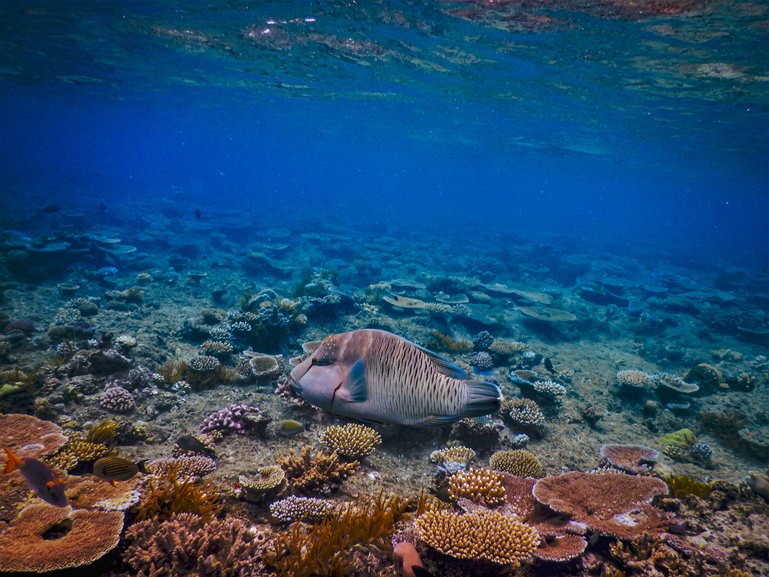
Ribbon reefs are generally known for having clear water and fortunately the water visibility for my trip was quite clear. The clear water encourages coral growth and supports the marine life, which is what makes ribbon reefs such good diving sites. You can choose to hire an underwater digital camera for your dive duration, but I took my own Nikon camera, which I used to take all of the photos and videos in this post and have used for all of the underwater trips I have ever taken. If you don't want to hire a camera and don't have your own, there are also underwater photos and videos shot by a professional photographer which you can choose to buy back on the vessel if you'd like.
The scuba diving experience was unlike anything else. The Great Barrier Reef is home to approximately 1500 different species of fish and 400 species of coral. I was able to see a reef shark, a sea turtle, parrot fish, butterfly fish, sergeant majors, angel fish, clownfish, wrasse, starfish and more. The current will pull you at times, so be aware of your surroundings so that you don't accidentally hit the reef at any point in time. At the end of your dive, your diving instructor will lead you back to the ropes for a controlled ascent back to the surface. Back aboard the wavepiercer on the way home, you will be given a memorial certificate of the dive as a keepsake, but this is not a certification for further diving.
Certified Divers
Certified divers can show their scuba certification card to allow for 2 dives to be taken in the one day on this trip. Each certified dive lasts approximately 40 minutes and the cost includes a dive instructor to accompany your group.
After the scuba dive, we headed back to the activity platform, where a hot and cold tropical buffet of fresh prawns, pastas, meats, salads and fruits were served in a buffet servery (included in tour fare). There was also a licensed bar for those who wanted to buy drinks whilst relaxing and taking in the surrounding views.
After lunch, more activities commence. I went snorkelling (included in the tour fare) and took a floating noodle for support. There is plenty of equipment in storage containers on the platform for guests to grab what they would like to take with them into the water. You can access the water from a submerged platform- make sure you take a buddy with you! There is an additional paid guided snorkel tour that can be added to your trip prior to the day, where the marine biologist will take you around the reef and point out various species of fish and coral. For advanced snorkellers, you are given the chance to duck dive to view the reef close up. For this tour you must be able to swim unassisted the whole time you are in the water.
You can also pre-book a 10 minute helicopter flight over the Reef as an optional extra, or use the post office box on the activity platform to send a postcard with the world's only Great Barrier Reef stamp.
At around 3:00pm, the wavepiercer heads back to shore from the reef and arrive back at the marina at around 4:00pm to head home. What a day! This was an experience I will never forget!
Note About Flying After Diving:
If you take one dive, a minimum 12 hours is recommended before flying, or 24 hours for more than one dive.

